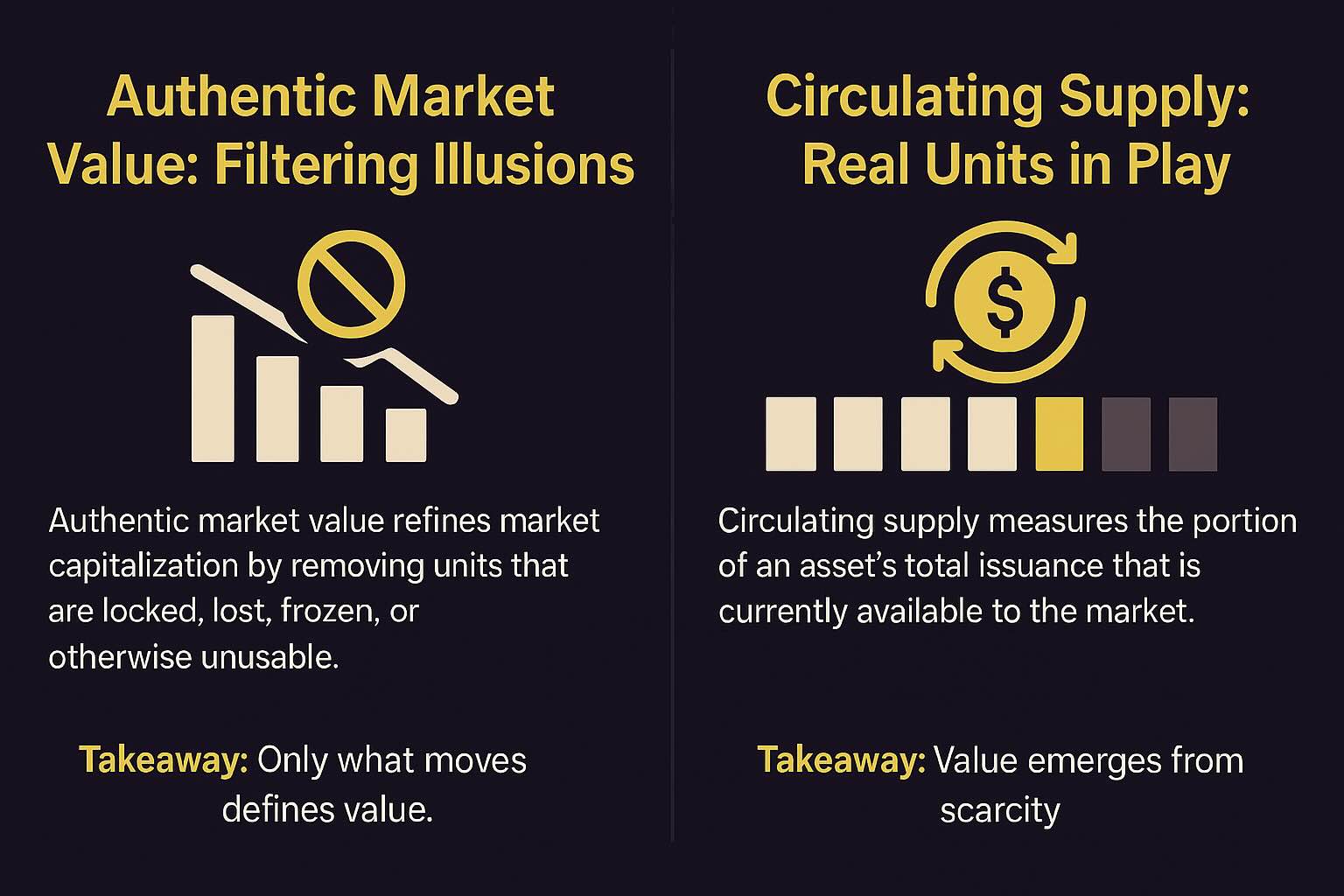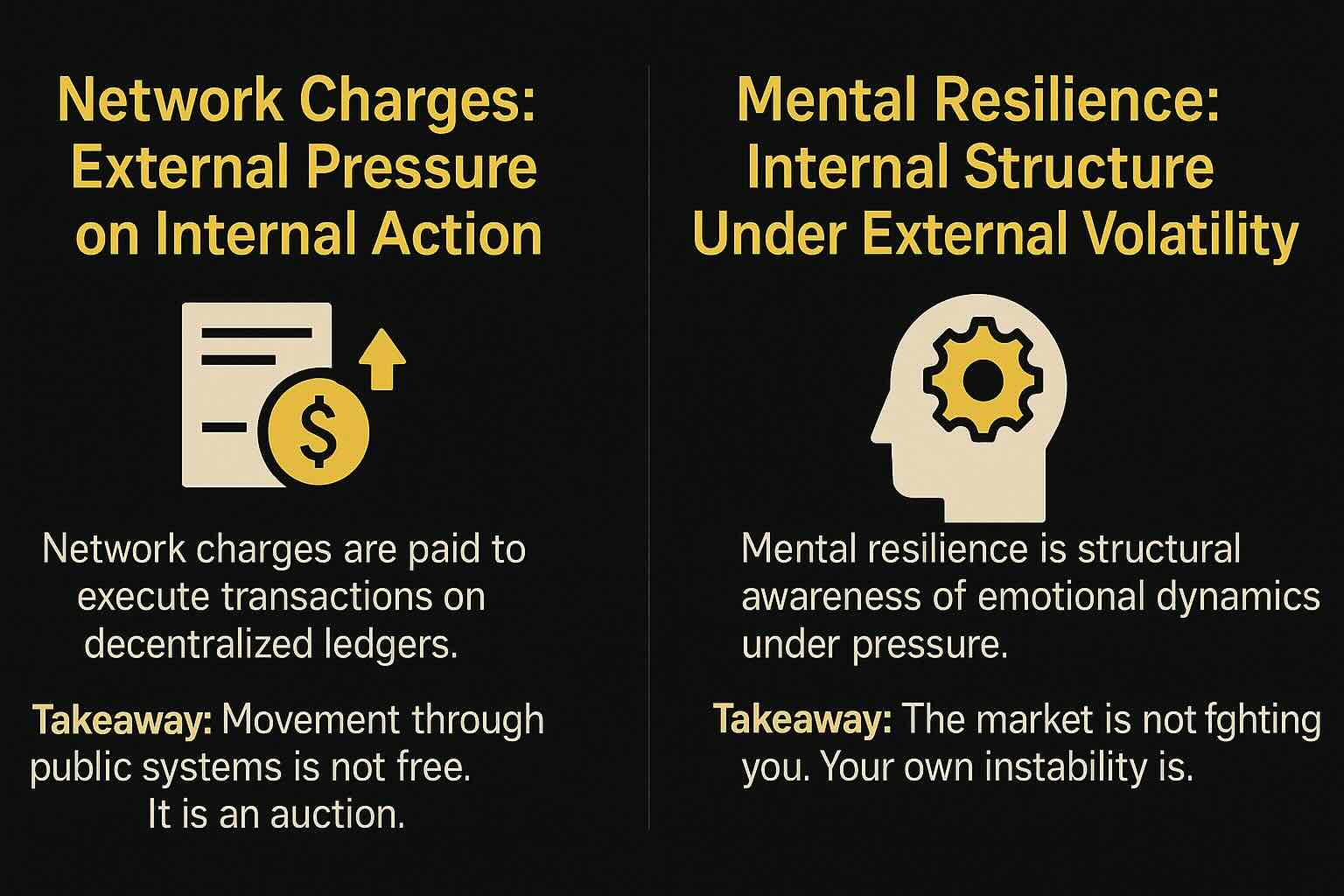The system isn’t random. You shouldn’t be either.

Welcome to this Kodex overview.
If you’re here to guess less — and understand more — you’re in the right place.
This guide gives you a clear starting point for decoding how markets actually behave.
You’ll learn the core forces that shape everything:
These ideas aren’t theory.
They’re real behaviors that affect every trade — whether you see them or not.
If you don’t understand them, you follow the market.
If you do, you move with it.
Each section gives you a quick understanding.
And when you're ready, you can dive deeper — with full walkthroughs for every concept.
You’re not just learning definitions.
You’re learning how to see what most people miss.
Because markets aren’t noise.
They’re systems.
And once you understand the system, you stop reacting — and start reading it.
Let’s begin.
Liquidity measures a market’s ability to handle pressure without losing its form.
It describes how easily an asset can change hands without disrupting the prevailing price.
Strong liquidity allows trades to pass smoothly, preserving order.
Weak liquidity fractures order, exposing the fragility beneath visible prices.
Liquidity is not convenience. It is structural breathing. Without it, price is not a reflection of consensus — it is a distortion of scarcity.
A liquid market absorbs force. An illiquid market reacts sharply, often violently.
Example:
In Bitcoin, a $1 million order often passes through multiple exchanges without significant slippage.
In contrast, thin markets can shift 20% or more on a single $50,000 trade, not because value changed — but because structure failed to absorb pressure.
Key awareness points:
Takeaway:
You do not move alone inside a market. You move inside its capacity to hold you.
Volume records the total movement of assets over a set period.
It is not speculation. It is not sentiment.
It is the hard evidence of engagement — where participants have acted, not merely watched.
High volume reflects concentration of focus.
Low volume reflects dispersion of attention.
Volume precedes price because mass precedes movement.
Without mass gathering in a system, pressure cannot convert into directional force.
Example:
Before Ethereum’s major upgrades, trading volume often expands even as price remains steady — signaling intensifying market engagement before outward movement.
Key awareness points:
Takeaway:
You cannot measure conviction by price alone. You measure it by how much weight moves behind it.

Market stability — also called consolidation — is not inactivity. It is preparation.
It occurs when opposing pressures neutralize each other, contracting price volatility into tight ranges.
During this phase, visible movement shrinks.
But hidden pressure grows.
Markets do not consolidate indefinitely.
Compression accumulates until directional force finally overcomes equilibrium.
Example:
An asset trading within a 2% range for weeks is not static.
It is accumulating latent energy that often unleashes in sudden, decisive moves once imbalance tips.
Key awareness points:
Takeaway:
Markets breathe in before they breathe out.
Market capitalization measures the combined value of all circulating units of an asset at the current price.
It is not a predictor of future direction.
It is a measure of current gravitational pull within the ecosystem.
Assets with large market caps act as anchors.
They move slower under pressure.
Small-cap assets behave differently: more agile, more volatile, but often more vulnerable to manipulation.
Market cap defines scale, not momentum.
Example:
Bitcoin’s trillion-dollar market cap defines the tempo of the digital asset market.
A newly launched token with a $10 million cap might quadruple in days — or collapse — simply because small masses move faster under lighter forces.
Key awareness points:
Takeaway:
Mass sets the frame. It does not set the motion.

Not all supply is visible.
Not all value is liquid.
Authentic market value refines market capitalization by removing units that are locked, lost, frozen, or otherwise unusable.
It measures only what can truly circulate — what can truly pressure or support price.
Without filtering for authenticity, market cap becomes a projection, not a reality.
Example:
A project might claim 100 million tokens in total, but if only 30 million are actually in free circulation, authentic value should be calculated from the real float — not the imagined one.
Key awareness points:
Takeaway:
Only what moves defines value. The rest is fiction.
Circulating supply measures the portion of an asset’s total issuance that is currently available to the market.
It defines practical scarcity — not theoretical scarcity.
An asset's potential value is shaped heavily by how many units are freely tradable versus how many are locked behind vesting schedules, foundation reserves, or lost forever.
Circulating supply frames real liquidity pressure and dilution risk.
Example:
Bitcoin’s hard limit of 21 million coins is well known.
But factoring in lost keys and long-term cold storage, the practical circulating supply is already meaningfully smaller — increasing effective scarcity.
Key awareness points:
Takeaway:
Value emerges from scarcity you can touch — not promises locked away.

Price variance describes the difference between the intended price of a trade and the price at which it is actually executed.
In slow, liquid markets, variance is minimal.
In volatile or illiquid conditions, variance expands, creating friction between decision and outcome.
Variance is not a mistake. It is the natural turbulence of live markets.
Understanding variance teaches you that setting a price and achieving it are two distinct events — separated by time, pressure, and competition.
Example:
During high-demand token launches, you might set a buy order at $2.00 but find execution completed at $2.12.
The price did not betray you. The system absorbed new information faster than your trade settled.
Key awareness points:
Takeaway:
In live markets, price is not a promise. It is a race.
Transaction fees are the built-in costs charged by some assets or exchanges to support liquidity, governance, or redistribution models.
They are not random deductions. They are deliberate design features.
Fees alter the economics of every transaction.
They reward some participants, discourage others, and impact long-term liquidity flows.
Ignoring fee structures is ignoring part of the market’s architecture.
Example:
Many DeFi tokens charge a 5% fee on every transfer: 4% redistributed to holders, 1% injected into liquidity pools.
Frequent trading without accounting for these fees erodes returns invisibly.
Key awareness points:
Takeaway:
Every movement inside a designed system carries a hidden price. Know it before you step.

Network charges — often called gas fees — are paid to execute transactions and record them on decentralized ledgers.
They are external to asset value but internal to operational costs.
When demand on the network increases, so do these charges — often suddenly and dramatically.
In low network pressure, costs are minimal.
In congestion, small trades can become disproportionately expensive, distorting decision-making.
Example:
Ethereum gas fees during high NFT minting periods have spiked individual transactions from $10 to $400 or more — pricing out smaller participants and altering network activity patterns.
Key awareness points:
Takeaway:
Movement through public systems is not free. It is an auction.
Markets move. Systems pressure participants constantly — not only financially, but mentally.
Without internal structure, external volatility fragments decision-making.
Emotions react faster than logic unless consciously restrained.
Mental resilience is not emotional suppression.
It is structural awareness of emotional dynamics — and the construction of habits that allow discipline to operate under pressure.
Example:
After three consecutive losing trades, an undisciplined participant often increases risk impulsively.
A resilient participant reduces position size, reassesses structure, and moves only when clarity returns.
Key awareness points:
Takeaway:
The market is not fighting you. Your own instability is.

The architecture of digital finance is not random.
Liquidity, volume, stability, supply, variance, fees, and resilience all interlock into living structures that govern how risk, value, and attention flow.
You are not here to guess direction.
You are here to decode architecture.
When you recognize the structures at work — and recognize yourself as part of them — you no longer move reactively through volatility.
You move intentionally, with presence.
Master the system beneath the surface.
Because the surface always changes.
The structures endure.